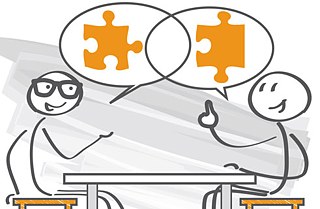Intercultural teaching and learning
Rethinking intercultural learning processes

Cultures do not have clearly definable boundaries, and are by no means homogenous within themselves. Instead, they are defined by dynamic relationships and interactions between people. – What is the significance of these new findings when it comes to designing intercultural learning scenarios? How can these insights be put into practice?
Culture and interculturality are in a state of flux: global networks are omnipresent nowadays, be it in the economy, ecology, logistics or media technology. It is not only political structures that appear to be hardening again at present; delimitations and exclusions are also on the rise around the world, with attempts being made to put the brakes on migration flows. All of this is happening within a network in which people are no longer able to isolate themselves in the way they could just a few decades ago. Cultures, no matter how widely or narrowly one chooses to define the term, acquire their identity nowadays not so much on the basis of themselves but rather from the quality of their relationships with other fields of cultural actors. The term field of actors refers primarily to networks of humans, though increasingly also of non-human actors, such as in the context of the Internet.
Cultures are more open, dynamic and interwoven. If we think this interpretation to its logical conclusion, we arrive at the term transculturality. This term is based on the assumption that cultures are hybrids that cannot in fact by delimited from one another. The philosopher Wolfgang Welsch strongly promoted this concept of transculturality in the 1990s as being distinct from an understanding of interculturality that was primarily structural and characterized by cultural comparisons. According to Welsch, this gives rise to delimitations between cultures that suggest cultural homogeneity. The consequence of this interpretation are unacceptable generalizations and instances of stereotyping – in other words the opposite of what intercultural teaching and learning actually intends to achieve. This criticism is justified. The concept of transculturality also has one weak point, however. The transcultural perspective, which dispenses with the boundaries between cultures, does not reflect the actual circumstances of boundary-setting, structural conflicts and vested interests. Current discourse, which seeks to rethink the concepts of culture and interculturality, attempts to combine the structural with the process-related. In this respect, culture represents the structural perspective and interculturality the process perspective – being two sides of the same coin, as it were.
Changed basic assumptions in intercultural research
Even if the arguments put forward by those who appeal for a reorientation in interculturality research and intercultural learning differ considerably, they agree in terms of their basic assumptions: supported by customs, agreements or laws, cultures are based on the rules and conventions governing the conduct of those who belong to them. Since people may often feel a sense of belonging not merely to one but to several cultures, these processes are complex. The more complex the negotiation process, the more problematic it is to describe cultures as homogeneous and clearly definable networks. As such, the familiar is interwoven with the foreign, the two constituting merely individual points within a spectrum that ranges across varying degrees of familiarity and unfamiliarity. One talks of an intercultural situation when unfamiliarity and indeterminacy predominate in it. This is because no plausible rules governing conduct and activities are known. Intercultural competence means the ability to negotiate rules, taking into account the viewpoints of those partners taking part in the interaction. If this is successful, such structuring allows the intercultural process to take on the first fragile forms of culturalism. Though intercultural action can certainly result in misunderstandings, it should be regarded first and foremost as an opportunity to discover new things and tap into unknown potential.
Consequences for intercultural teaching and learning
Against the backdrop of the changed basic theoretical assumptions, it is obvious that established approaches to intercultural teaching and learning also need to be rethought. Exercises based on “dos & don’ts” and those which reduce cultures to national cultures and attempt to explain them with the help of dimensional models or standardized assumptions are hardly reconcilable with the new paradigms. The same applies to role plays and simulations involving two cultures of contrasting design that are presented accordingly as homogeneous, and to culture assimilator exercises that give a monocausal explanation of intercultural misunderstandings.As yet, there are not many new types of intercultural learning exercises that take the aforementioned changes into account. A number of relevant initiatives, including the Goethe-Institute’s development of a concept for intercultural training, have been launched. Their overarching learning objectives include the following:
- a constructive approach to situations involving indeterminacy and uncertainty
- to reflect upon perspectives and act accordingly
- to understand differences not only in terms of their potential for misunderstanding but also and above all with regard to the potential opportunities they offer
- to identify and exploit potential synergies
- to develop an awareness of power asymmetries that may arise – also as a result of different language skills – in intercultural activities
- to understand cultures as networks that cannot be clearly delimited from one another, offer added value and are potentially open
- to understand cultural developments within their global historical contexts
- to be motivated to engage in intercultural activities, and to motivate others to do likewise
Potential of digital media
From a methodological and didactic perspective, the objective is to make learners hungry for experiences and to show them how they can discover different cultural networks themselves. What is more, teachers need methods they can use not only to raise the subject of interculturality but also to initiate interculturality. In this context digital media can open up all kinds of possibilities that are far from exhausted: virtual classrooms allow (groups of) learners worldwide to interact within the framework of virtual simulation games and together to elaborate topical themes in projects. In this way, live collaboration is possible despite multilingualism, time differences and indeterminacy. Across national boundaries, learners can use screencasts to analyse these processes together in the virtual domain. Such learning scenarios offer gateways to all the learning objectives outlined above.Digitally-supported learning by discovery is much the same: Google Earth and Street View not only allow learners to embark on extremely different journeys of discovery, but also – thanks to the images and comments posted by users worldwide – document at the same time all kinds of views of one and the same situation.
However, exercises for new intercultural learning can also be developed easily for non-digital learning scenarios: “positive incidents” are events that are not based on misunderstandings but combine the potential of those involved. This gives rise to new things that none of the participants would have produced on their own. These exercises also include role plays which take the multiple identities of their actors into account; case studies in which the development of intercultural synergetic potential is documented, and last but not least co-working projects in which the focus is on mutual appreciation and a conscious desire to be and work together. One example of this is the sugar cube tower game:
What all these new types of exercise have in common is their goal: namely to understand and practise intercultural action as an opportunity for togetherness and for interlinking fields of cultural actors, starting out from a self-critical perspective. In the process, participants must accept that the local and the global have equal value.
Literature
Bolten, Jürgen (Ed.) (2016): (Inter-)Kulturalität neu denken. Special publications from the Interculture Journal. Vol. 15, Issue 26.Haas, Helene (2009): Das interkulturelle Paradigma. Passau: Stutz Verlag.
Helmolt, Katharina van/Berkenbusch, Gabriele/Jia, Wenjian (Ed.) (2013): Interkulturelle Lernsettings. Konzepte – Formate – Verfahren. Stuttgart: ibidem.
Thiagarajan, Sivasailam/Bergh, Samuel van den (Ed.) (2014): Interaktive Trainingsmethoden. Thiagis Aktivitäten für berufliches, interkulturelles und politisches Lernen in Gruppen. Schwalbach/ Ts.: Wochenschau Verlag.
Welsch, Wolfgang (2009): Was ist eigentlich Transkulturalität?